
BIOS Overclocking …
We also want to try out overclocking a little here. To do this, we first use the “ASRock Extreme” power profile in the BIOS, then additionally with the Gaming OC Present Stage 2, Stage 3 unfortunately led directly to a blue screen at startup.
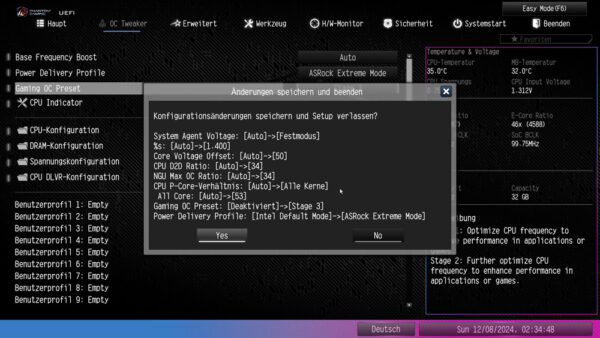
Under Windows we then use the Intel Extreme Tuning Utility.
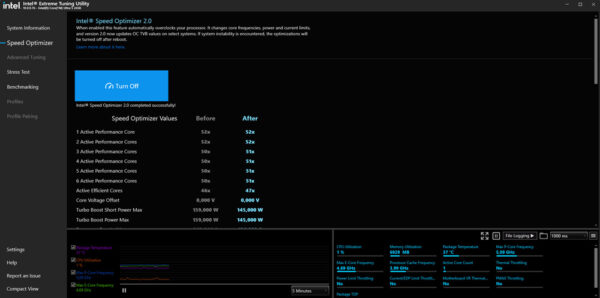
We tested the overall performance using the Cinebench R24 tool with single and multi-core tests. We also used hardware info to determine the clock rates and power consumption. First the basic performance in the default state with an active XMP profile. Since Hwinfo is also running here, a few fewer points are generally achieved in the benchmarks.
The Intel Core Ultra 5 245 achieves a very good 1436 points in the multicore, which is already a pretty good score for the CPU. In addition, the CPU achieves 5.188 GHz on all P-cores and 4.59 GHz on the E-cores, with a maximum consumption of just under 124W.

Then singlecore and here it is a good 133 points at just under 45.3W.
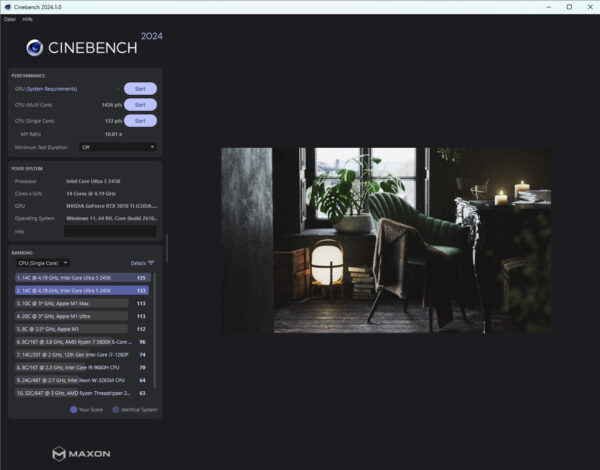
With the ASRock Extreme profile activated in the BIOS, the benchmarks change only minimally. The multicore score is now slightly higher than before at 1446 points, with a slight increase in consumption to almost 130W. Here too, 5.188 GHz was achieved on the P-cores and 4.588 GHz on the E-cores.
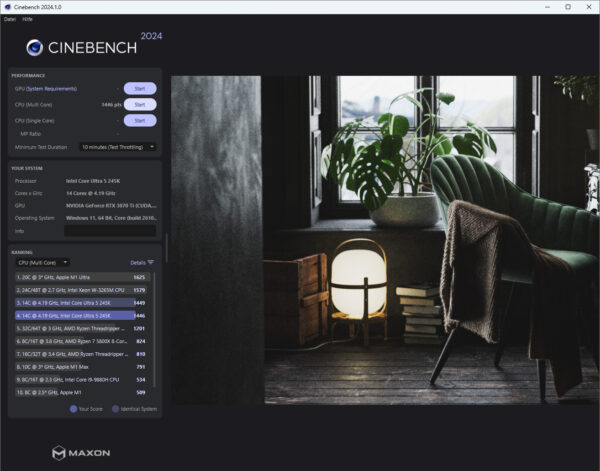
The points in the single core are identical at 133 points and with a maximum 5.188 GHz and a consumption of only 47.7W.
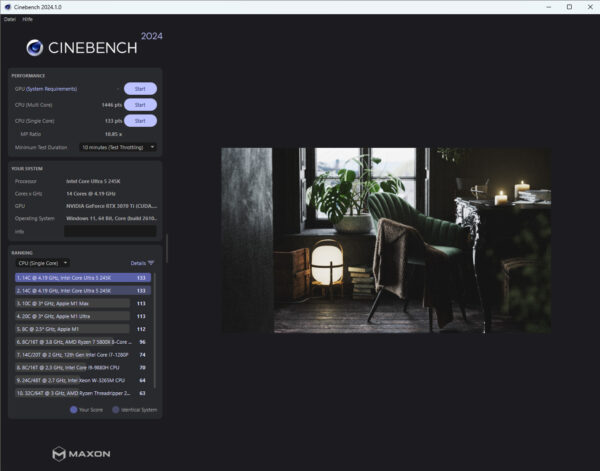
Now we come to the results from the BIOS settings with active ASRock Extreme profile and the Gaming OC Present Stage 2. 1446 points are also achieved here, even though the P-cores have increased to 5.288 GHz, the E-cores to 4.59 GHz and the consumption to a whopping 150W.
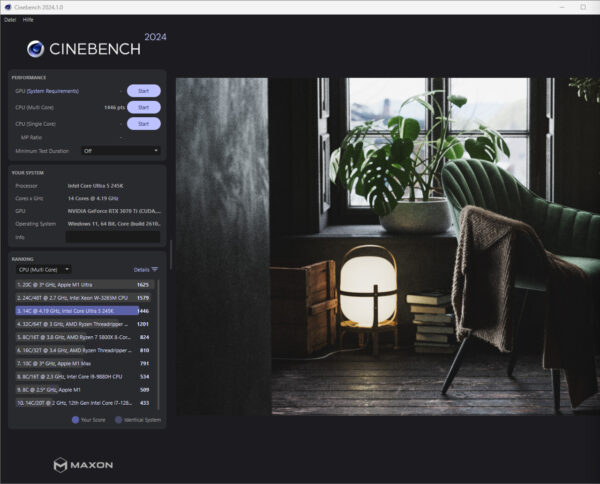
In the single core, we achieve a little more than before with 135 points and also with a maximum of 5.288 GHz, but with a consumption that has doubled to almost 105W.
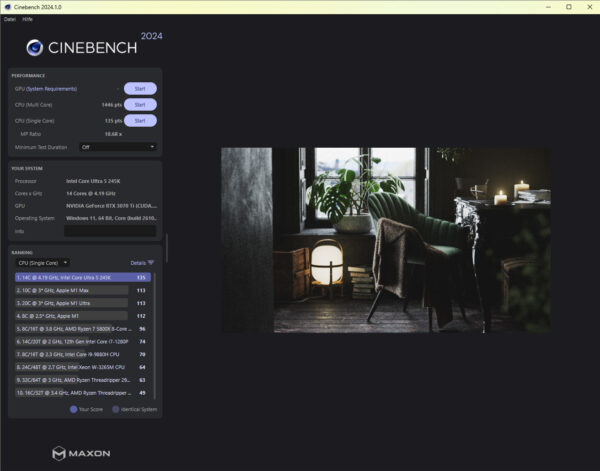
Now we overclock again with the Intel Extreme Utility. Here we run the speed option. This Auto OC function also adjusts the clock rates and voltages automatically. But here too, Intel is rather conservative and only gives the e-cores 100 Mhz more, but turns the voltages down a little.
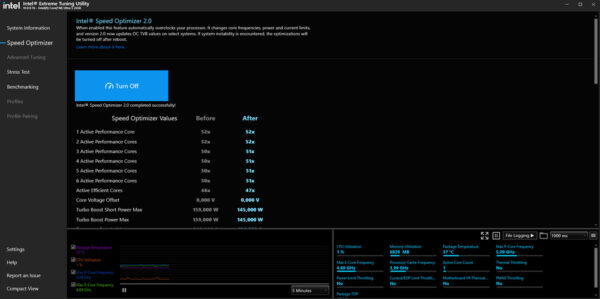
The multicore already looks good, here we achieve a good 1450 at just 5.08 GHz on the P-cores and 4.689 GHz on the E-cores with a consumption of 136.8W.
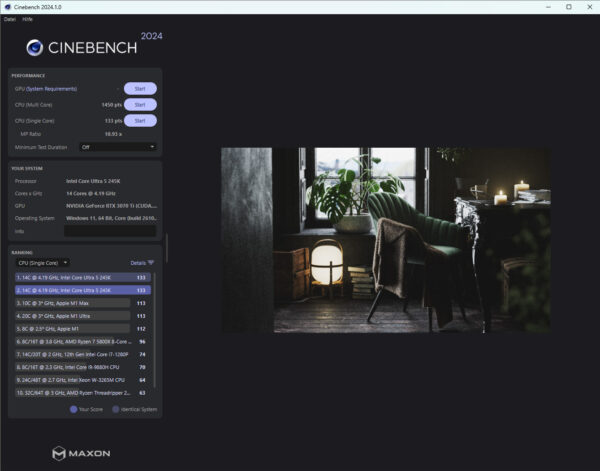
Finally, there is the single-core result. Here again, 133 points are achieved at 5.188 GHz and a power consumption of 51.6W.
The conclusion is that with a lot of work and familiarization with the subject of overclocking, you can usually get much more out of your hardware than the software tools or preset settings could ever achieve.
ASRock Z890 Lightning WiFi Software …

